Evaluation of Rooftop Photovoltaic Power Generation Potential Based on Deep Learning and High-Definition Map Image
Abstract
:1. Introduction
1.1. Fixed-Value Methods
1.2. Radar Method
1.3. Deep Learning Method Based on HD Map
- This paper presents a system for estimating the potential of large-scale photovoltaics in rural China.
- Based on high-definition map images, the technical potential was obtained through the “photovoltaic Power Station Design Code” (GB50797-2012).
- The improved SegNeXt model was used for roof identification with high accuracy.
- We used the Bass Diffusion Model to forecast installed capacity and derive the trend of installed capacity over the next 35 years, which is in line with China’s trend of “peak carbon and carbon neutrality”.
2. The Framework of the Proposed Methodology
3. Methodology
3.1. Assessment of the Geographical Potential of Rooftop Photovoltaics
- Areas with the richest solar resources: average solar radiation greater than 1750 kWh/m2.
- Areas with very rich solar resources: solar radiation between 1400 kWh/m2 and approximately 1750 kWh/m2.
- Areas with abundant solar resources: the radiation ranges from 1050 kWh/m2 to approximately 1400 kWh/m2.
- Areas with average solar energy resources, with radiation values less than 1050 kWh/m2.
3.2. Evaluation of the Physical Potential
3.2.1. Improved SegNeXt
3.2.2. Monte Carlo Algorithm
3.2.3. Area Correction
- Equipment coefficient (B1): excluding the area proportion of HVAC equipment, water tank, chimney;
- Solar thermal energy coefficient (B2): the area proportion of the surface occupied by the solar hot water system is excluded;
- The effective area coefficient of the photovoltaic module (B3): the ratio of the surface area of the photovoltaic module to the surface area of the roof, taking into account the gap between the photovoltaic modules to avoid mutual occlusion and reflection.
3.3. Evaluation of the Technological Potential
3.3.1. Power Generation Potential of Photovoltaic System
3.3.2. Bass Diffusion Model
3.4. Error Analysis
- True Positive (TP): instances of the positive class are predicted to be positive; the roof of the building is correctly identified as the roof of the building;
- False Negative (FN): instances of the positive class are predicted to be negative; the roof of the building is incorrectly identified as the background;
- False Positive (FP): instances of the negative class are predicted to be positive; the background is incorrectly identified as the roof of a building;
- True Negative (TN): an instance of a negative class is predicted to be a negative class; the background is correctly identified as the background.
4. Results and Discussion
4.1. Physical Potential of Rooftop Photovoltaics
4.1.1. Data Acquisition
4.1.2. Training Dataset Construction and Data Enhancement
4.1.3. Model Verification
4.1.4. Calculation Results of Leizhou City
4.2. Potential Calculation of Rooftop PV Installed Capacity
5. Conclusions
Author Contributions
Funding
Data Availability Statement
Acknowledgments
Conflicts of Interest
References
- Melius, J.; Margolis, R.; Ong, S. A Review of Methods, Patents, and Validation Techniques; National Renewable Energy Laboratory: Golden, CO, USA, 2013.
- Izquierdo, S.; Rodrigues, M.; Fueyo, N. A method for estimating the geographical distribution of the available roof surface area for large-scale photovoltaic energy-potential evaluations. Sol. Energy 2008, 82, 929–939. [Google Scholar] [CrossRef]
- Lehmann, H.; Peter, S. Assessment of Roof and Facade Potentials for Solar Use in Europe; Institute for Sustainable Solutions and Innovations (ISUSI): Aachen, Germany, 2003. [Google Scholar]
- Guo, X.L. Evaluation of Rooftop Solar Photovoltaic Utilization Potential Based on Roof Area in Xuzhou City. Master’s Thesis, China University of Mining and Technology, Beijing, China, 2015. [Google Scholar]
- Wiginton, L.K.; Nguyen, H.T.; Pearce, J.M. Quantifying rooftop solar photovoltaic potential for regional renewable energy policy. Comput. Environ. Urban Syst. 2010, 34, 345–357. [Google Scholar] [CrossRef]
- Ladner-Garcia, H.P.; O’Neill-Carrillo, E. Determining realistic photovoltaic generation targets in an isolated power system. In Proceedings of the 2009 IEEE Power & Energy Society General Meeting, Calgary, AB, Canada, 26–30 July 2009; pp. 1–5. [Google Scholar] [CrossRef]
- Guangxu, L.; Wenxiang, W.; Xujiao, Z.; Yang, Z. Evaluation of rooftop available solar energy resources: A case study of the data of Jiangsu Province in 2000. Resour. Environ. Yangtze Basin 2010, 19, 1242–1248. [Google Scholar]
- Schallenberg-Rodríguez, J. Photovoltaic techno-economical potential on roofs in regions and islands: The case of the Canary Islands. Methodological review and methodology proposal. Renew. Sustain. Energy Rev. 2013, 20, 219–239. [Google Scholar] [CrossRef]
- Levinson, R.; Akbari, H.; Pomerantz, M.; Gupta, S. Solar access of residential rooftops in four California cities. Sol. Energy 2009, 83, 2120–2135. [Google Scholar] [CrossRef]
- Jakubiec, J.A.; Reinhart, C.F. A method for predicting city-wide electricity gains from photovoltaic panels based on LiDAR and GIS data combined with hourly Daysim simulations. Sol. Energy 2013, 93, 127–143. [Google Scholar] [CrossRef]
- Romero Rodríguez, L.; Duminil, E.; Ramos, S.; Eicker, U. Assessment of the photovoltaic potential at urban level based on 3D city models: A case study and new methodological approach. Sol. Energy 2017, 146, 264–275. [Google Scholar] [CrossRef]
- Hofierka, J.; Kaňuk, J. Assessment of photovoltaic potential in urban areas using open-source solar radiation tools. Renew. Energy 2009, 34, 2206–2214. [Google Scholar] [CrossRef]
- Leitelt, L.; Bendor, T. Developing a Solar Energy Potential Map. Planning Advisory Service Memo; 2010. Available online: https://www.cma.gov.cn/2011xwzx/2011xqxxw/2011xqxyw/202304/t20230404_5421074.html?from=singlemessage (accessed on 21 April 2023).
- Schwarz, H.; Ying, S. Urban photovoltaic potential. In Proceedings of the 9th International Conference on Environment and Electrical Engineering, Prague, Czech Republic, 16–19 May 2010; pp. 26–28. [Google Scholar]
- Li, Z.; Zhang, Z.; Davey, K. Estimating Geographical PV Potential Using LiDAR Data for Buildings in Downtown San Francisco. Trans. GIS 2015, 19, 930–963. [Google Scholar] [CrossRef]
- Hofierka, J.; Zlocha, M. A New 3-D Solar Radiation Model for 3-D City Models. Trans. GIS 2012, 16, 681–690. [Google Scholar] [CrossRef]
- Verso, A.; Martin, A.; Amador, J.; Dominguez, J. GIS-based method to evaluate the photovoltaic potential in the urban environments: The particular case of Miraflores de la Sierra. Sol. Energy 2015, 117, 236–245. [Google Scholar] [CrossRef]
- Matsumoto, T.; Hayashi, K.; Huang, Y.; Tomino, Y.; Nakamura, M. Study on the estimation of solar power potential of each individual roof using airborne LiDAR data—Case study in the western part of Nagoya city. J. Hum. Environ. Symbiosis 2021, 37, 141–152. [Google Scholar]
- Sezer, A.; Altan, A. Detection of solder paste defects with an optimization-based deep learning model using image processing techniques. Solder. Surf. Mt. Technol. 2021, 33, 291–298. [Google Scholar] [CrossRef]
- Altan, A.; Karasu, S.; Zio, E. A new hybrid model for wind speed forecasting combining long short-term memory neural network, decomposition methods and grey wolf optimizer. Appl. Soft Comput. 2020, 100, 106996. [Google Scholar] [CrossRef]
- Qin, Y.; Wu, Y.; Li, B.; Gao, S.; Liu, M.; Zhan, Y. Semantic segmentation of building roof in dense urban environment with deep convolutional neural network: A case study using GF2 VHR imagery in China. Sensors 2019, 19, 1164. [Google Scholar] [CrossRef]
- Li, L.; Liang, J.; Weng, M.; Zhu, H. A Multiple-Feature Reuse Network to Extract Buildings from Remote Sensing Imagery. Remote Sens. 2018, 10, 1350. [Google Scholar] [CrossRef]
- Mou, L.; Hua, Y.; Zhu, X.X. A Relation-Augmented Fully Convolutional Network for Semantic Segmentation in Aerial Scenes. In Proceedings of the IEEE/CVF Conference on Computer Vision and Pattern Recognition 2019, New Orleans, LA, USA, 18–24 June 2022; pp. 12408–12417. [Google Scholar] [CrossRef]
- Xu, Y.Y.; Wu, L.; Xie, Z.; Chen, Z. Building extraction in very high resolution remote sensing imagery using deep learning and guided filters. Remote Sens. 2018, 10, 144. [Google Scholar] [CrossRef]
- Guo, R.; Liu, J.; Li, N.; Liu, S.; Chen, F.; Cheng, B.; Duan, J.; Li, X.; Ma, C. Pixel-wise classification method for high resolution remote sensing imagery using deep neural net-works. ISPRS Int. J. Geo-Inf. 2018, 7, 110. [Google Scholar] [CrossRef]
- Badrinarayanan, V.; Kendall, A.; Cipolla, R. Segnet: A deep convolutional encoder-decoder architecture for image segmentation. IEEE Trans. Pattern Anal. Mach. Intell. 2017, 39, 2481–2495. [Google Scholar] [CrossRef]
- Audebert, N.; Le Saux, B.; Lefèvre, S. Semantic segmentation of earth observation data using multimodal and multi-scale deep networks. In Proceedings of the Asian Conference on Computer Vision 2016, Taipei, Taiwan, 20–24 November 2016; pp. 180–196. [Google Scholar] [CrossRef]
- Chen, G.; Li, C.; Wei, W.; Jing, W.; Woźniak, M. Fully convolutional neural network with augmented atrous spatial pyramid pool and fully con-nected fusion path for high resolution remote sensing image segmentation. Appl. Sci. 2019, 9, 1816. [Google Scholar] [CrossRef]
- Pan, X.; Yang, F.; Gao, L.; Chen, Z.; Zhang, B.; Fan, H.; Ren, J. Building Extraction from High-Resolution Aerial Imagery Using a Generative Adversarial Network with Spatial and Channel Attention Mechanisms. Remote Sens. 2019, 11, 917. [Google Scholar] [CrossRef]
- Huang, Z.; Mendis, T.; Xu, S. Urban solar utilization potential mapping via deep learning technology: A case study of Wuhan, China. Appl. Energy 2019, 250, 283–291. [Google Scholar] [CrossRef]
- Krapf, S.; Kemmerzell, N.; Khawaja Haseeb Uddin, S.; Hack V’azquez, M.; Netzler, F.; Lienkamp, M. Towards scalable economic photovoltaic potential analysis using aerial images and deep learning. Energies 2021, 14, 3800. [Google Scholar] [CrossRef]
- Zhong, T.; Zhang, Z.; Chen, M.; Zhang, K.; Zhou, Z.; Zhu, R.; Wang, Y.; Lü, G.; Yan, J. A city-scale estimation of rooftop solar photovoltaic potential based on deep learning. Appl. Energy 2021, 298, 117132. [Google Scholar] [CrossRef]
- Xu, F.Y. Roof Area Recognition and Roof PV Capacity Estimation Based on Remote Sensing Images. Master’s Thesis, Hangzhou Dianzi University, Hangzhou, China, 2016. [Google Scholar]
- China Wind and Solar Energy Annual Outlook Communique. Available online: https://www.cma.gov.cn/zfxxgk/gknr/qxbg/202304/t20230421_5454513.html (accessed on 21 April 2023).
- Zhao, H.; Jia, J.; Koltun, V. Exploring self-attention for image recognition. In Proceedings of the IEEE/CVF Conference on Computer Vision and Pattern Recognition, Seattle, WA, USA, 13–19 June 2020; pp. 10076–10085. [Google Scholar]
- GB50797-2012; Code for Design of Photovoltaic Power Stations. Ministry of Housing and Urban-Rural Development: Beijing, China, 2012.
- Tang, Z.; Liu, L.; Yu, H.; Cui, J. Research on demand diffusion for sequels based on Bass Model and three-stage process Model. Oper. Res. Manag. 2019, 28, 166–175. [Google Scholar]
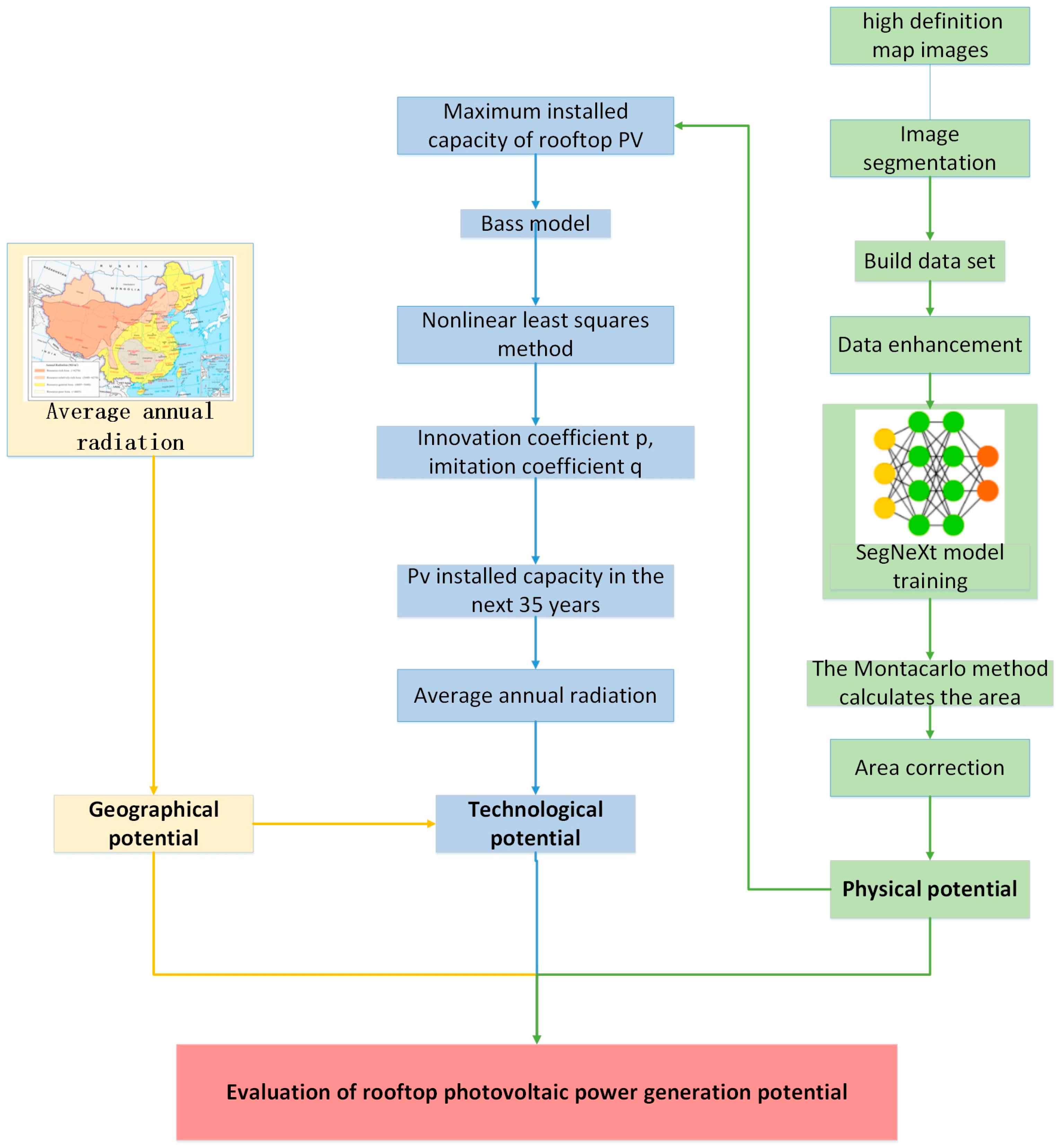
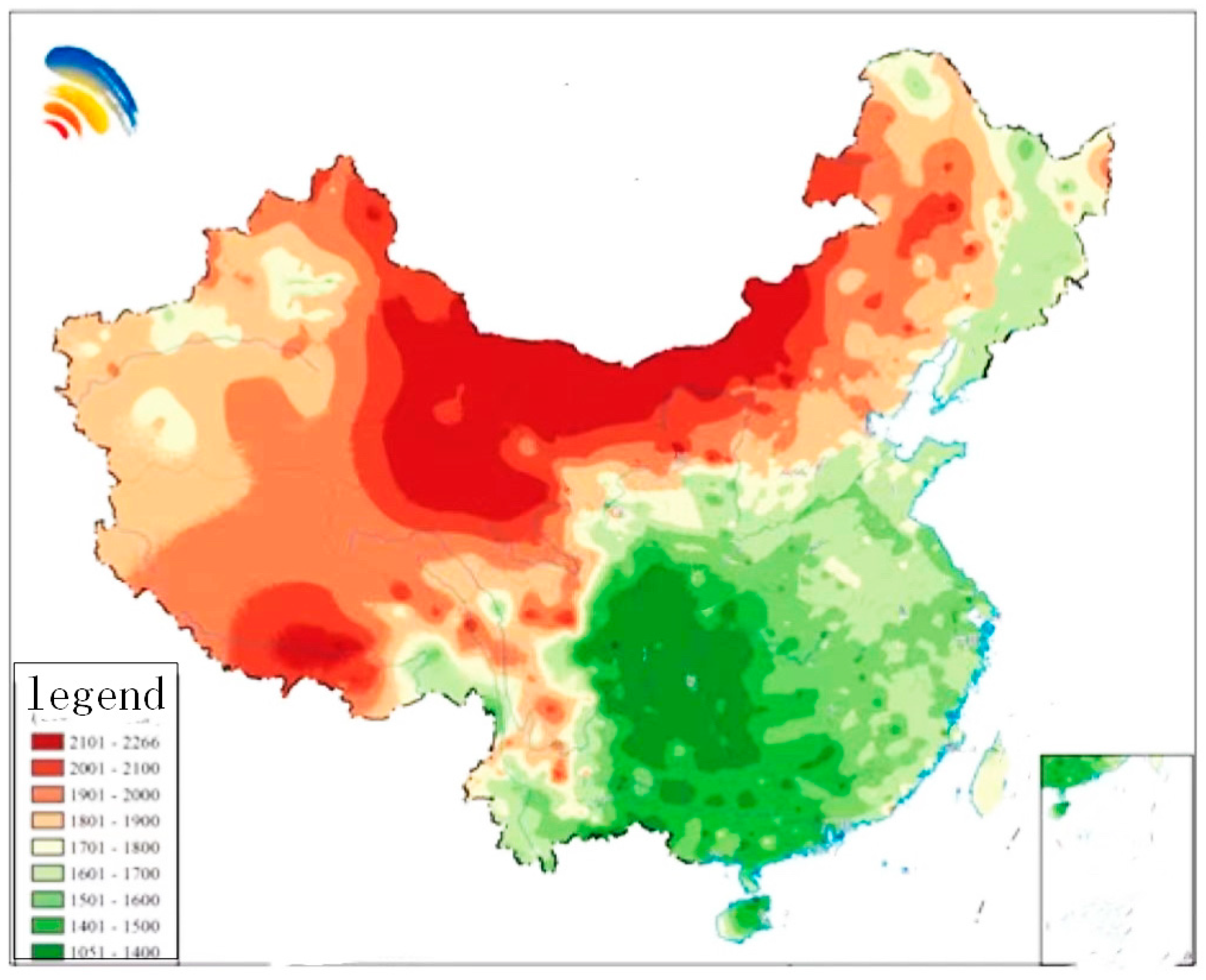


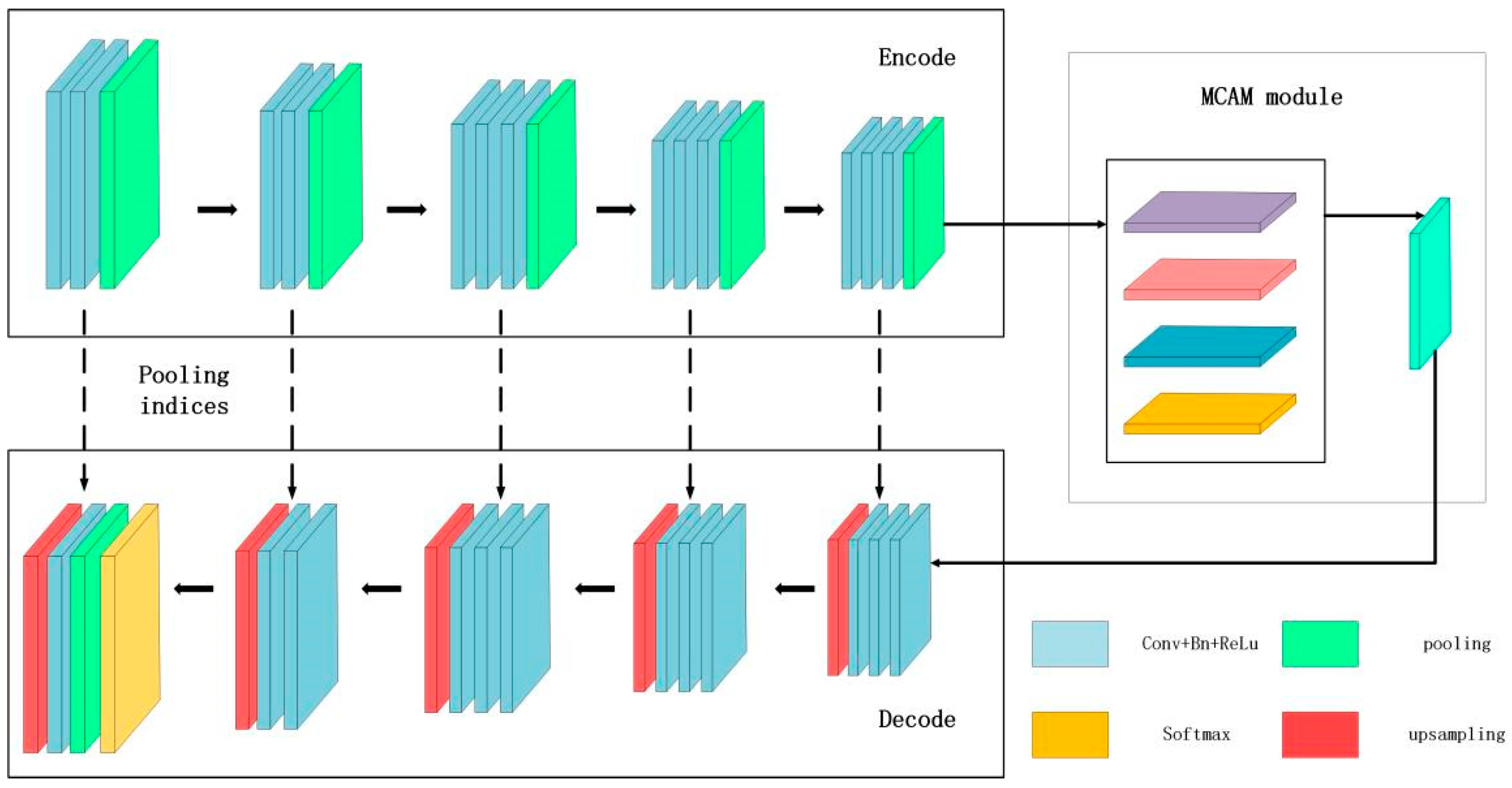

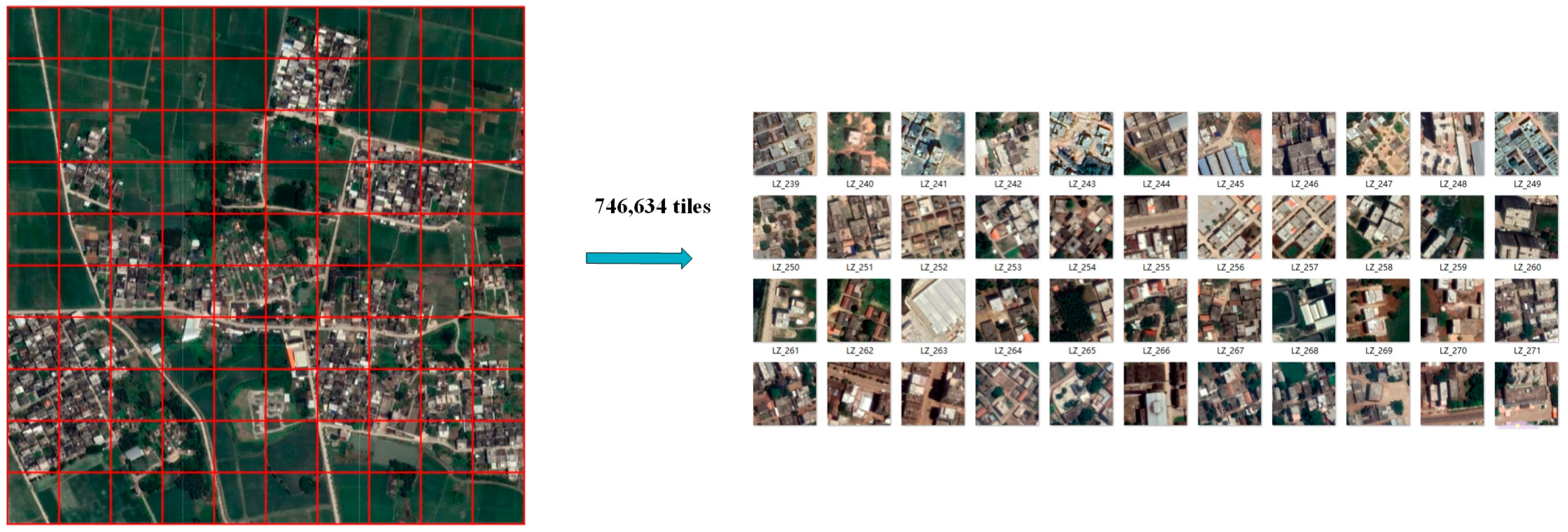
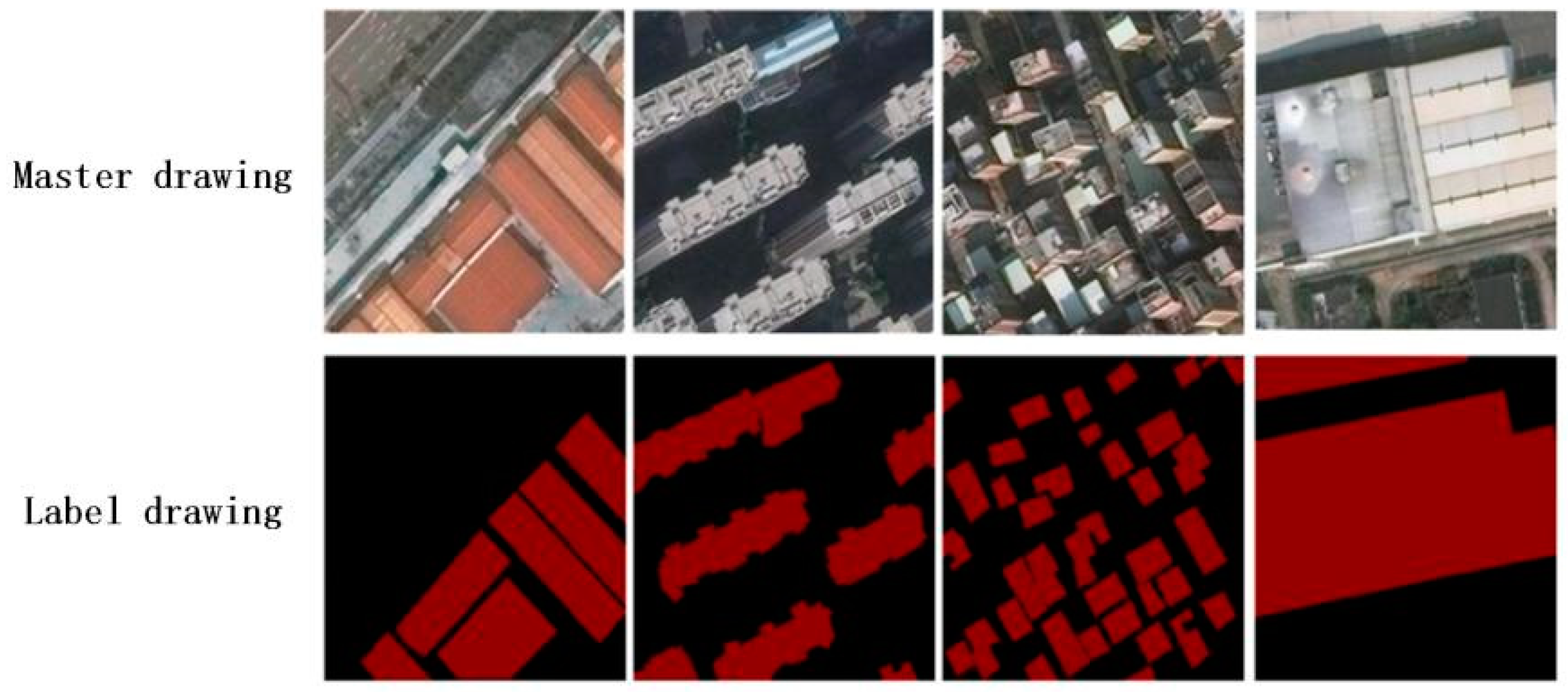


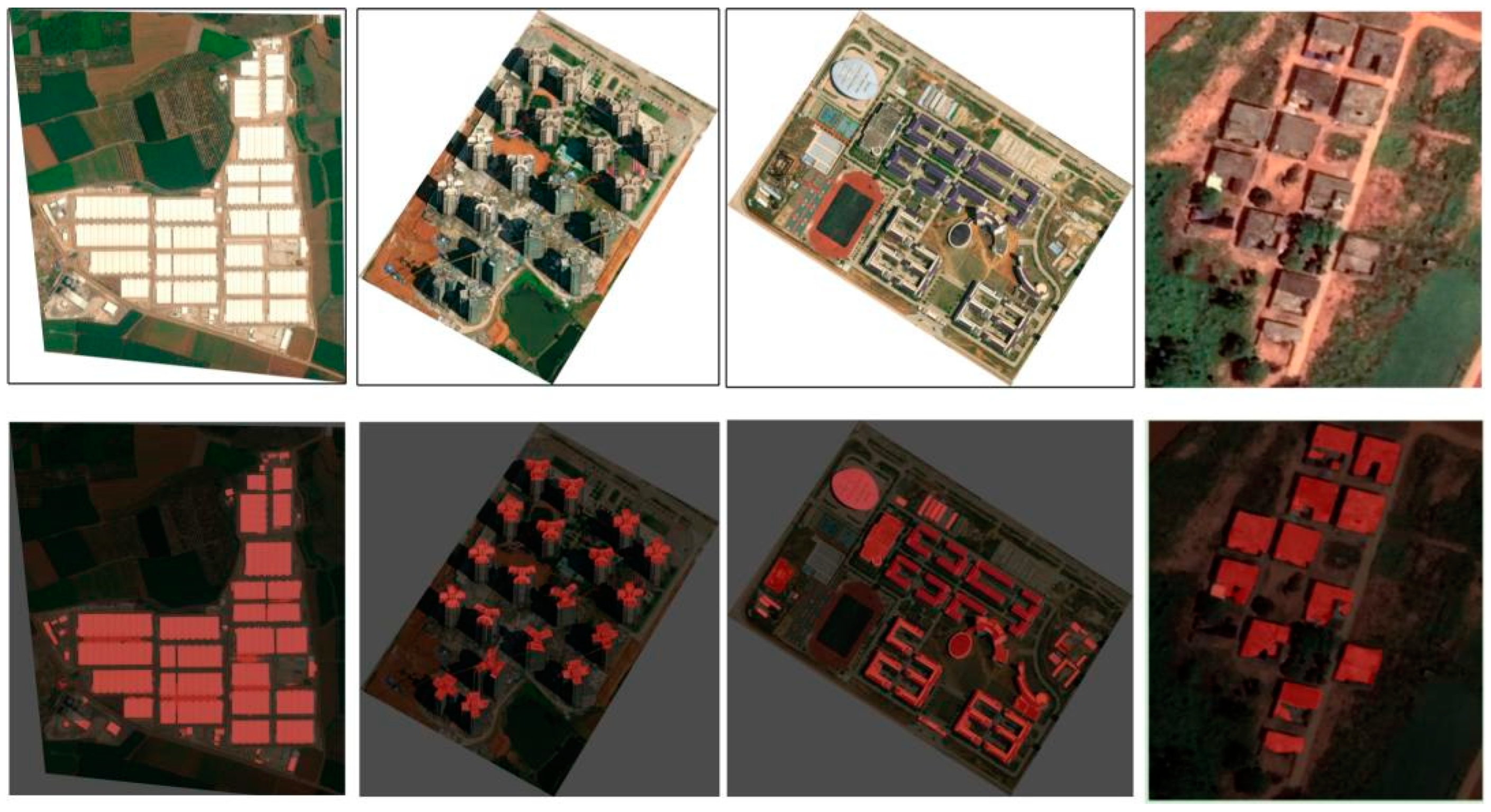


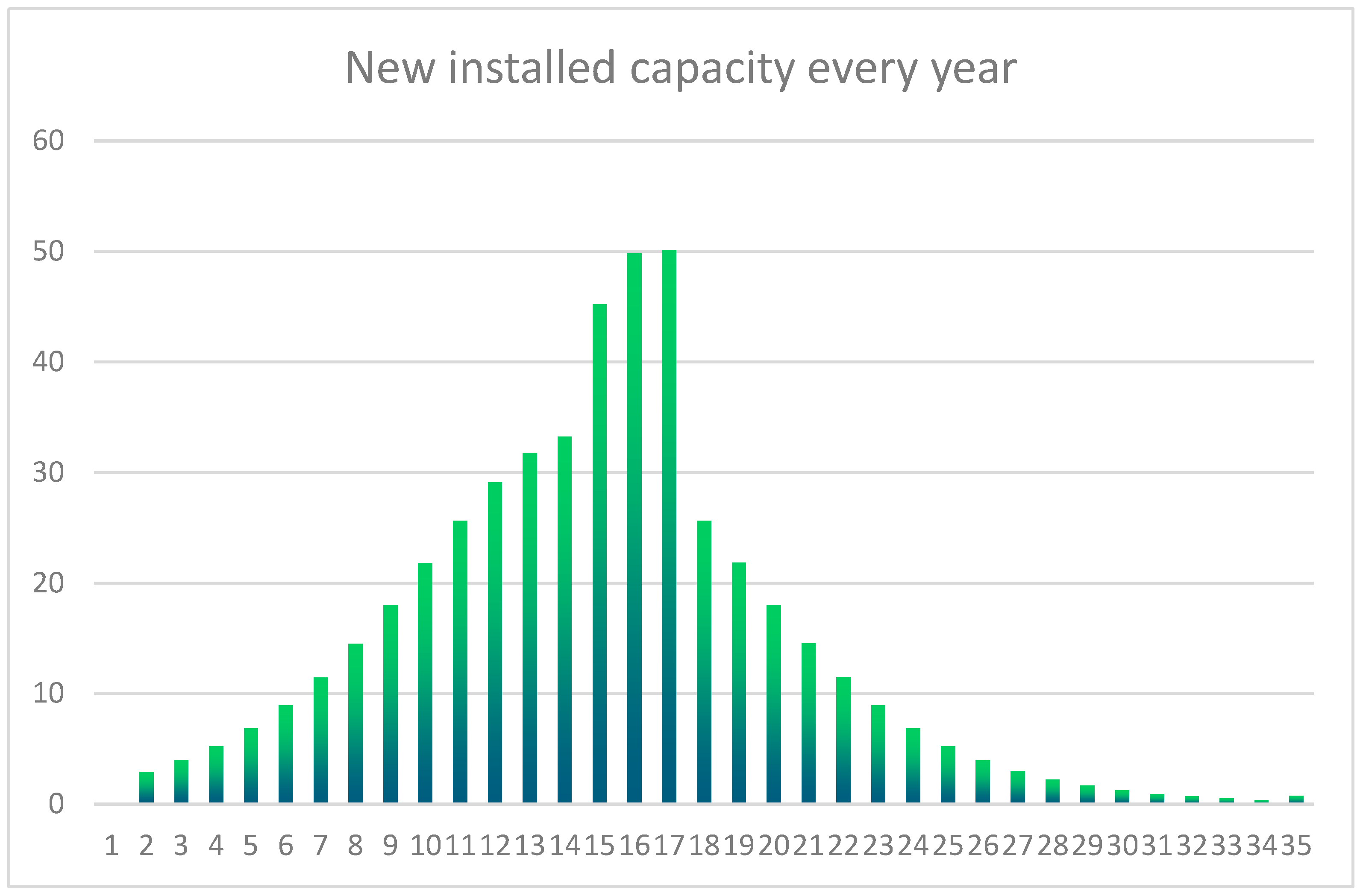
| Predicted Value | True | Negative | |
|---|---|---|---|
| True Value | |||
| True | TP | FN | |
| Negative | FP | TN | |
| Equipment | Disposition |
|---|---|
| GPU | NVIDIA GeForce RTX 3080×8 |
| CPU | Intel(R) Core(TM) i7-7700HQ 2.80 GHz |
| Internal memory | 32 G |
| Hard disk | 500 G |
| Hyperparameter Type | Parameter Value |
|---|---|
| Batch_size | 64 |
| Learning rate | 0.0005 |
| Optimizer_type | adam |
| Epoch | 100 |
| Momentum | 0.9 |
| Minimum image size | 256 × 256 |
| Loss function | Cross Entropy Loss |
| OA | PR | RE | F1 | mIoU | |
|---|---|---|---|---|---|
| ImprovedSegNeXt | 96.21% | 88.33% | 90.68% | 91.6% | 87.03% |
| SegNeXt | 95.4% | 87.03% | 89.14% | 89.91% | 85.95% |
| Pixel | Area | |
|---|---|---|
| backdrop | 48,931,405,824 | 3,733,466,264.37 |
| roof | 988,601,751 | 75,430,313.60 |
| Year | 2013 | 2014 | 2015 | 2016 | 2017 | 2018 | 2019 | 2020 | 2021 | 2022 |
|---|---|---|---|---|---|---|---|---|---|---|
| t | 1 | 2 | 3 | 4 | 5 | 6 | 7 | 8 | 9 | 10 |
| Installed capacity (GW) | 3.1 | 4.67 | 6.06 | 10.32 | 29.66 | 50.62 | 62.63 | 78.23 | 107.51 | 158.61 |
Disclaimer/Publisher’s Note: The statements, opinions and data contained in all publications are solely those of the individual author(s) and contributor(s) and not of MDPI and/or the editor(s). MDPI and/or the editor(s) disclaim responsibility for any injury to people or property resulting from any ideas, methods, instructions or products referred to in the content. |
© 2023 by the authors. Licensee MDPI, Basel, Switzerland. This article is an open access article distributed under the terms and conditions of the Creative Commons Attribution (CC BY) license (https://creativecommons.org/licenses/by/4.0/).
Share and Cite
Cui, W.; Peng, X.; Yang, J.; Yuan, H.; Lai, L.L. Evaluation of Rooftop Photovoltaic Power Generation Potential Based on Deep Learning and High-Definition Map Image. Energies 2023, 16, 6563. https://doi.org/10.3390/en16186563
Cui W, Peng X, Yang J, Yuan H, Lai LL. Evaluation of Rooftop Photovoltaic Power Generation Potential Based on Deep Learning and High-Definition Map Image. Energies. 2023; 16(18):6563. https://doi.org/10.3390/en16186563
Chicago/Turabian StyleCui, Wenbo, Xiangang Peng, Jinhao Yang, Haoliang Yuan, and Loi Lei Lai. 2023. "Evaluation of Rooftop Photovoltaic Power Generation Potential Based on Deep Learning and High-Definition Map Image" Energies 16, no. 18: 6563. https://doi.org/10.3390/en16186563
APA StyleCui, W., Peng, X., Yang, J., Yuan, H., & Lai, L. L. (2023). Evaluation of Rooftop Photovoltaic Power Generation Potential Based on Deep Learning and High-Definition Map Image. Energies, 16(18), 6563. https://doi.org/10.3390/en16186563







